How to Begin – Make Teaching ensemble songs to play on the xylophone Easy
Teaching ensemble songs to play on the xylophone is easy once you know what to expect. Both you and your students will love playing 3-part xylophone music, and students will work on songs over and over again, and still enjoy playing them even when they are polished. This will be a game changer for saving you time on lesson planning.
If you already have in place procedures and a good routine for teaching songs to play on the xylophone, then you are ready to go to the next step.
If you are looking for tips to get your students started, check out 5 Easy Tips for How to play on Xylophone – Get Elementary Students Started by clicking here. This blog with give you teaching tips to establish a solid routine for classroom setup, mallet choices, effect playing positions, sharing xylophone, and beginning to play.
If you are also teaching a ukulele unit check out these 5 ukulele tab easy tips.
Tips To Keep in Mind: Teaching Ensemble Songs to Play on the Xylophone
- It will start out sounding disorganized. Don’t panic, it will clear up. You are teaching your students an amazing skill of being able to fit several different parts of music notes, and rhythm together. It takes time to develop this skill. What sounds horrible one week will improve the next even when you only see them once a week.
- Xylophone playing can go beyond grade school. Middle school students also really enjoy playing the xylophone especially when they are working on challenging songs with multiple parts. Ensemble songs to play on the xylophone can give students a sense of pride and accomplishment which leads to an engaging class that will work together, support one another, and has a perception of belonging. This is a very important social-emotional need for many middle schoolers.
- Teach the entire class all parts. It takes more time to do this but is so insightful in assessing each student’s skill level and assigning them to the right instrument or part. You will find you need your best beat keepers on the big bass xylophone.
- Break each part you are teaching into bite-size pieces and teach by rote my turn, your turn. Learning to read music can happen, but keep in mind this is a different learning goal. The teaching goal addressed in this article is to develop musical skills through ensemble songs to play on the xylophone.
Teaching Goals
- Develop an internal sense of beat.
- Understand the organization of music.
- Hear how their part fits within the whole.
- Play as an ensemble
Easy Xylophone Songs: Breaking down the Parts
To begin with, It really helps to understand the function of each of the parts or rhythms on the xylophone. The xylophone sizes bass, alto, and soprano differ in size and function. This blog will focus on the function of the parts for songs to play on the xylophone.
Xylophone: Ride the Timeline
Ensemble music for easy xylophone songs is best described as polyrhythms that ride the timeline. To understand the term “ride the timeline,” let’s look at music from Africa. It is believed the xylophone was brought to Africa from China. Africa is a large continent with 54 countries and the music varies from region to region. However, a common trait of African music is that it is driven by rhythm.
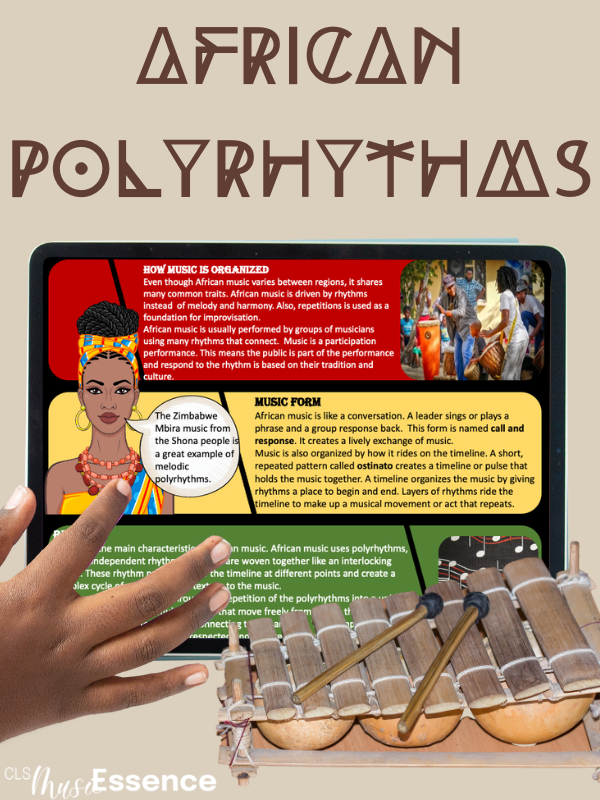

African music is organized by how it rides on the timeline. A timeline is a short, repeated pattern also called ostinato. It is the pulse that holds the music together. A timeline organizes the music by giving rhythm patterns a place to begin and end. Once I understood this concept, I knew how to begin teaching easy xylophone songs and how to lead my students into playing ensemble music.
Bass Xylophone Function on Songs to Play on the Xylophone
When teaching songs to play on the xylophone, begin with the timeline which is most often the function of the bass xylophone. Generally, it is the easiest part to learn and will help get the structure of the song in your student’s ears teaching them to listen to where the music is going.
Students can play any xylophone at this point. They are just learning the correct notes, rhythm, and pattern. In other words, students can play the bass part on a soprano xylophone for the purpose of learning it and letting as many students as possible play at one time. (See tips for sharing an instrument here).
The Bass xylophone is the loudest xylophone and needs to be played by students who are strong at keeping a steady tempo. The bass xylophone player will be the leader keeping everyone together. I usually put 2 players on one bass to make sure the instruments can be heard well.
If you are writing xylophone music for your students, think about the bass xylophone notes as establishing the chord progression. The bass xylophone plays chord tones, bordun, or a walking bass line. If you are like me you have heard the word bordun but are always looking it up to clarify the meaning. A bordun is an open 5th played on strong beats. It could also be considered an ostinato if students are droning on these notes throughout. If you are in the key of C it is the 1st and 5th degree of the scale, C and G.
Chord tones and bourdons can be played in several ways.
- Blocked
- Broken
- Arpeggiated
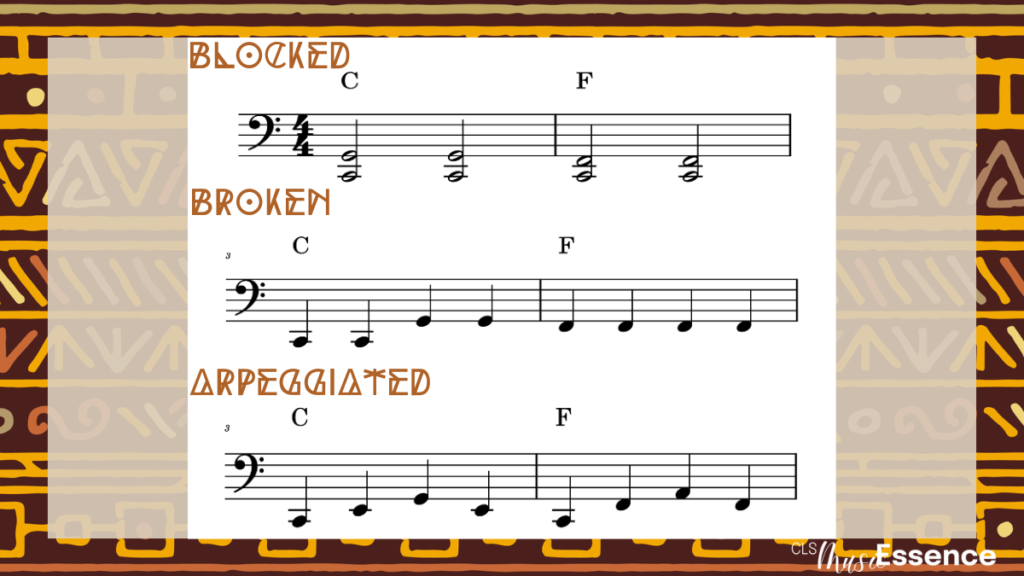

Chunk out the Alto Part
Once students have learned the bass part, the next step for teaching songs to play on the xylophone is adding in a chunk of the alto part. or medium size xylophone. The alto part can be the melody of a song, or an interesting rhythm part that will “ride the timeline.” Rather than a simple ostinato this part usually has several patterns.
Analyze the music to find small bite-size chunks to teach. These chunks can be taught over several class periods. The main objective is to start layer 2 parts together. Once students know just one chuck of the alto part start combining both the alto and bass together.
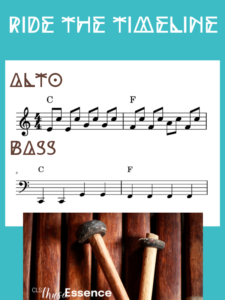

Begin with the timeline on the bass and layer in the alto pattern by demonstrating where the starting point is for the alto part to enter. This can be done by students listening and watching you play and also by playing along with the students as they are learning.
You will want to be visible for your students to both see and hear you play. It works best for only the teacher to play on the opposite side of the xylophone across from the student. Everyone should continue playing the one chunk on repeat as you go down the line helping them by modeling the pattern.
Grab a Quick Assessment
Teaching songs to play on the xylophone is great for grabbing a quick assessment. As you move to each xylophone, you can easily watch and see each student’s abilities, and focus more time on those who may need more help. The objective is to develop their musical sense of how the two parts fit together by training their ears to listen.
This is why a strong bass player is important in ensemble songs to play on the xylophone. When other students rush the tempo the bass needs to stay steady.
It can take several class periods before the alto pattern or melody is completely learned and can be played with the bass line successfully. Read tips for adding in the soprano xylophone, and establishing a form to make your next performance impactful and impressive! Click Here
Are you looking for easy songs to play on the xylophone? Here is a music lesson plan for spiritual and freedom songs. See them by clicking here.



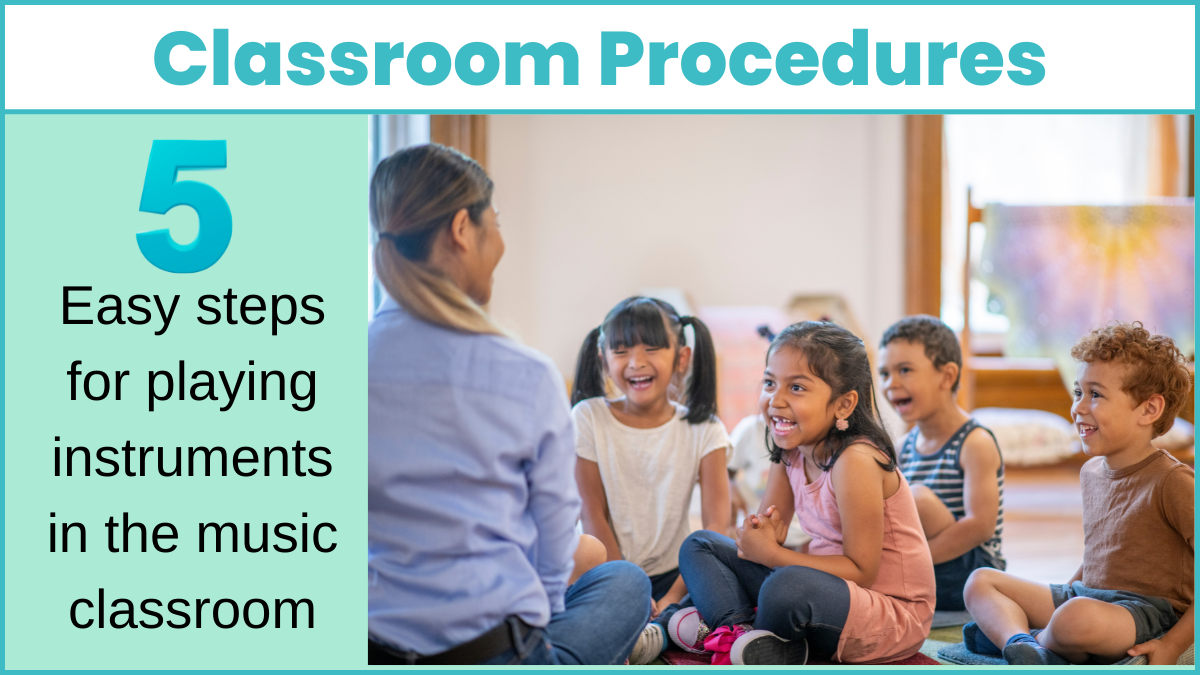

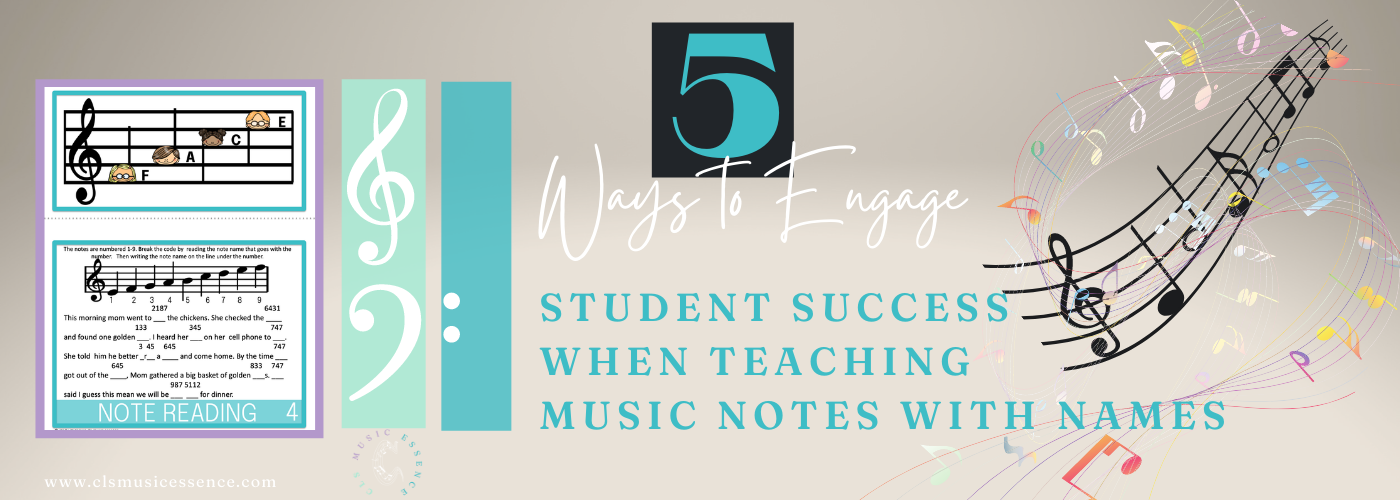



One Comment